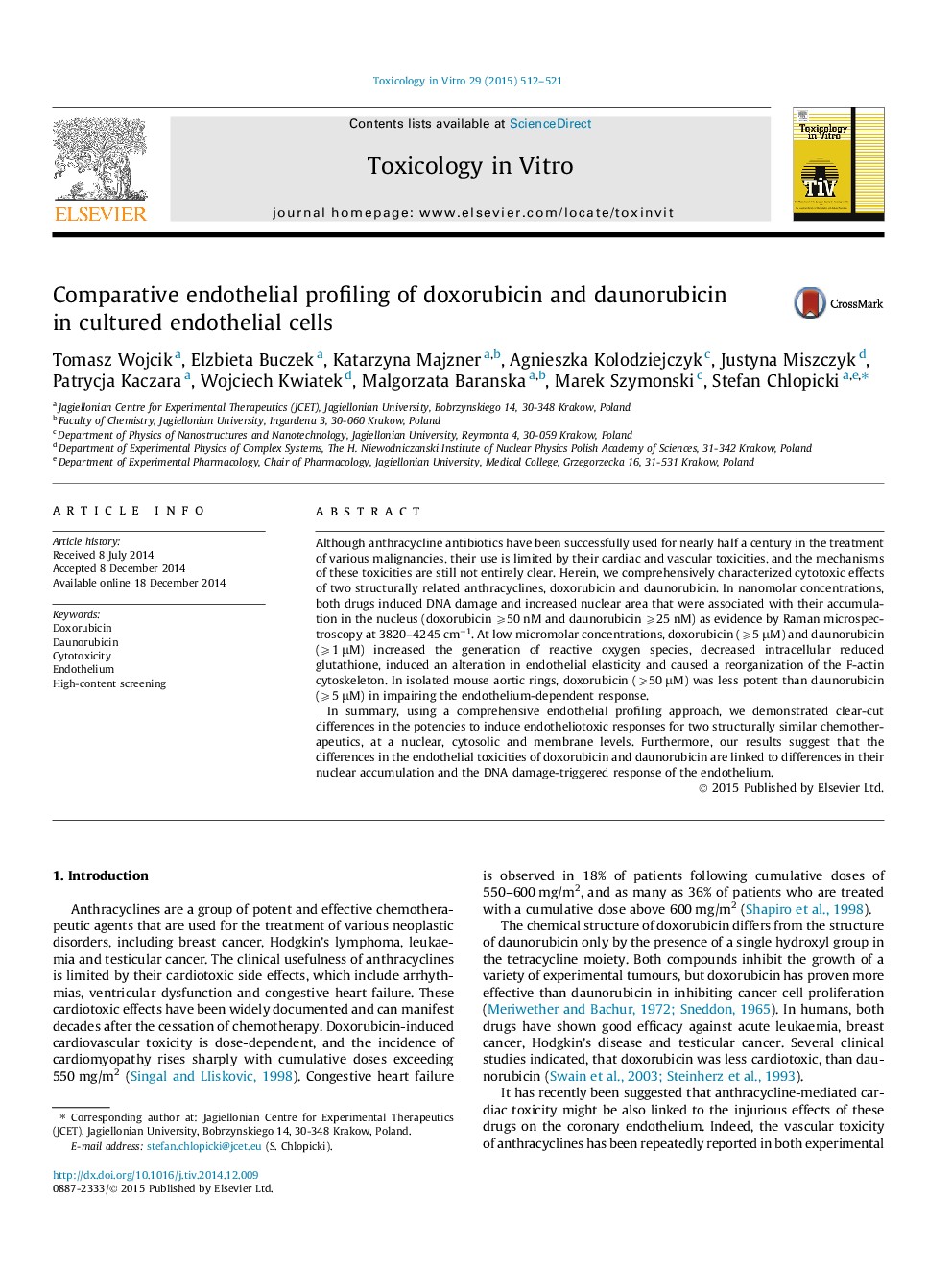| کد مقاله | کد نشریه | سال انتشار | مقاله انگلیسی | نسخه تمام متن |
|---|---|---|---|---|
| 2602485 | 1133762 | 2015 | 10 صفحه PDF | دانلود رایگان |
• We compared endothelial cytotoxicity of doxorubicin and daunorubicin.
• Nuclear accumulation and genotoxicity were evident in nanomolar concentrations.
• Effect was more pronounced for daunorubicin than for doxorubicin.
• DNA damage-triggered response was a primary cause of the endothelial toxicity.
• Reactive oxygen species (ROS) generation seems to be a secondary event.
Although anthracycline antibiotics have been successfully used for nearly half a century in the treatment of various malignancies, their use is limited by their cardiac and vascular toxicities, and the mechanisms of these toxicities are still not entirely clear. Herein, we comprehensively characterized cytotoxic effects of two structurally related anthracyclines, doxorubicin and daunorubicin. In nanomolar concentrations, both drugs induced DNA damage and increased nuclear area that were associated with their accumulation in the nucleus (doxorubicin ⩾50 nM and daunorubicin ⩾25 nM) as evidence by Raman microspectroscopy at 3820–4245 cm−1. At low micromolar concentrations, doxorubicin (⩾5 μM) and daunorubicin (⩾1 μM) increased the generation of reactive oxygen species, decreased intracellular reduced glutathione, induced an alteration in endothelial elasticity and caused a reorganization of the F-actin cytoskeleton. In isolated mouse aortic rings, doxorubicin (⩾50 μM) was less potent than daunorubicin (⩾5 μM) in impairing the endothelium-dependent response.In summary, using a comprehensive endothelial profiling approach, we demonstrated clear-cut differences in the potencies to induce endotheliotoxic responses for two structurally similar chemotherapeutics, at a nuclear, cytosolic and membrane levels. Furthermore, our results suggest that the differences in the endothelial toxicities of doxorubicin and daunorubicin are linked to differences in their nuclear accumulation and the DNA damage-triggered response of the endothelium.
Figure optionsDownload as PowerPoint slide
Journal: Toxicology in Vitro - Volume 29, Issue 3, April 2015, Pages 512–521
